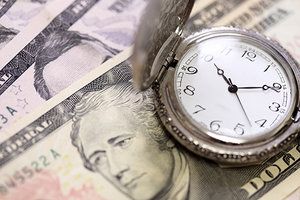Whether you accept it, avoid it or live somewhere in between, insurance coverage has become a defining issue for our profession. Patients increasingly expect to use their benefits, practitioners want to be compensated fairly for their time and expertise, and the system itself remains – at best – fragmented. The encouraging news is that coverage has expanded in meaningful ways. The challenging news is that reimbursement, across the board, remains inadequate.
Billing Timed Services
Q: I do not always use physical medicine services but in my state I do have a scope of practice that allows me to provide many of these services. I am trying to understand what "direct one-on-one patient contact" means in relation to physical medicine services. Specifically, the timed services 97032 through 97036, constant attendance services and 97110 through 97535 therapeutic procedures. Do I have to physically be in contact with the patient to qualify to report and bill these services?
A: This is often misunderstood and leads to trepidation when documenting and subsequently billing timed services. For modalities such as attended electrical stimulation, CPT code 97032, clearly there will be direct one-on-one contact as the electrode is often used and hand-held during the transmission of the service thus making contact is clearly direct. However, services such as therapeutic exercise 97110 may not need direct "touching" contact, but visual and verbal contact only as the patient performs the specific exercises.
What is Contact?
Modalities: "Constant attendance involves visual, verbal, and/or manual contact with the patient during provision of the service." AMA, CPT Assistant, p. 13 (July, 2004). Procedures: "From a CPT coding perspective ... Therapeutic procedure, one or more areas, each 15-minutes; ... requires the therapist to maintain direct patient contact (i.e., visual, verbal and/or manual contact) during provision of the service." AMA, CPT Assistant, p. 11 (December, 1999). Contact must be sufficiently skilled to assure that the procedure will cause the intended specific therapeutic change. E.g. having an unskilled therapist simply watch a patient do an exercise incorrectly is insufficient.

Based on this definition by the AMA CPT® Assistant, it answers that you may indeed consider it contact without direct manual interaction. But documentation should reflect not only the level of contact but the time of this contact as all of these codes have a 15-minute time element that must be met for billing purposes.
Therefore, electrical stimulation 97032 may be considered attended even it is not a hand held unit but one with "pads" where the patient is constantly monitored visually or verbally without constant manual contact.
Counting Time as a Function of Work
Pre-service time includes assessment and management time - medical record review, physician contact while the patient is present, assessment of the patient's progress since the previous visit, and time required to establish clinical judgment for the treatment session. Pre-service time is not the time required to get the patient ready to receive the treatment. Intra-service time includes the hands-on treatment time. Post-service time includes the assessment of treatment effectiveness, communication with the patient/caregiver to include education/instruction/counseling/advising, professional communications, clinical judgment required for treatment planning for the next treatment session, and documentation while the patient is present.
Counting Minutes
When only one service is provided in a day, providers should not bill for services performed for less than eight minutes. For any single timed CPT code in the same day measured in 15-minute units, providers bill a single 15-minute unit for treatment greater than or equal to eight minutes through and including 22 minutes. If the duration of a single modality or procedure in a day is greater than or equal to 23 minutes through and including 37 minutes, then two units should be billed. Time intervals for one through four units are as follows:
1 unit: ≥ 8 minutes through 22 minutes
2 units: ≥ 23 minutes through 37 minutes
3 units: ≥ 38 minutes through 52 minutes
4 units: ≥ 53 minutes through 67 minutes
The pattern remains the same for treatment times in excess of one hour.
Note: the time with the patient that is part of the overall acupuncture service including pre, intra and post service counts toward the face-to-face time, even the time where there is no direct manual contact.



